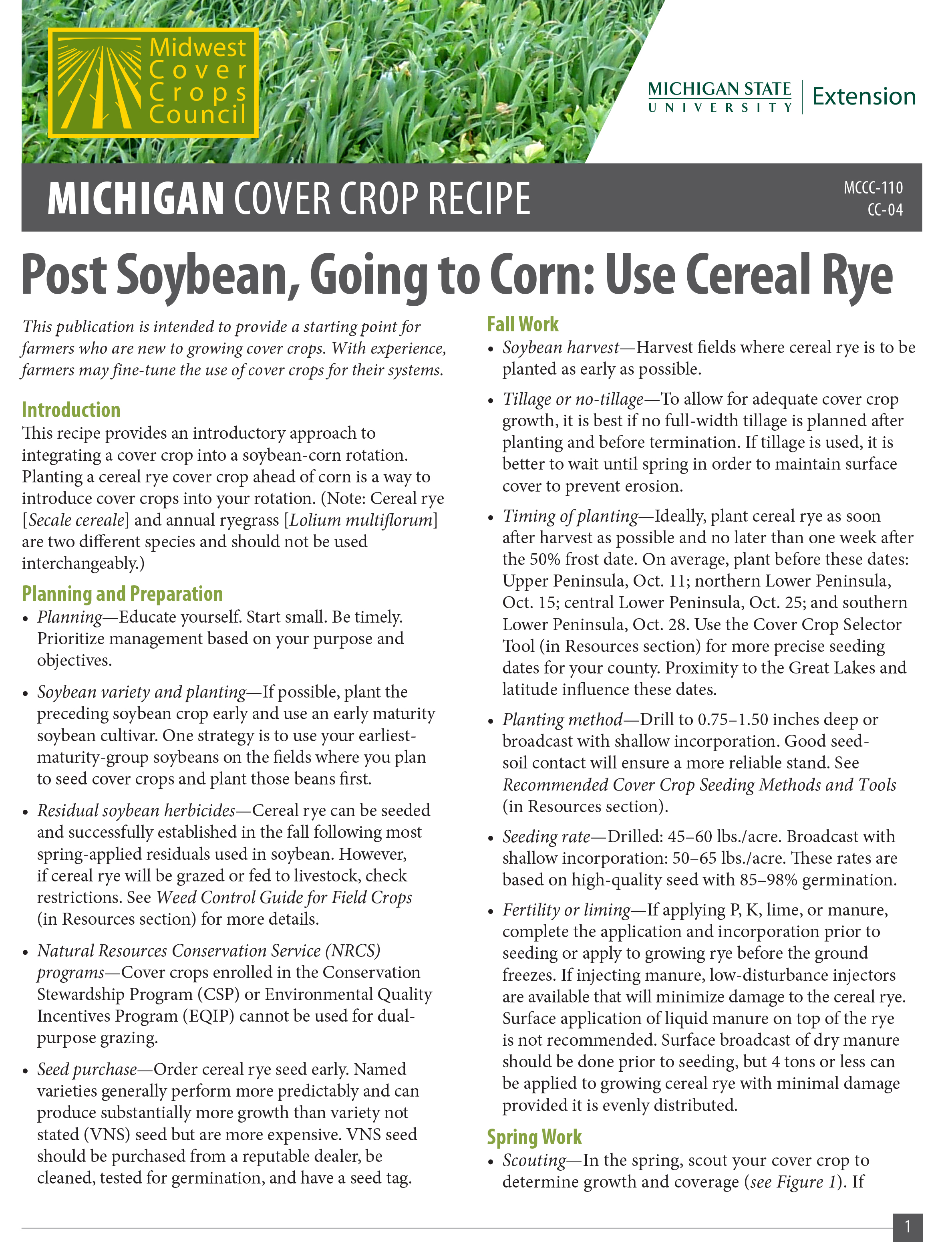Cover crop recipes: Post soybean, use cereal rye
The following recipe provides an introductory approach to integrating cover crops into soybean rotation going to corn.

Are you a farmer about to harvest this year’s soybean crop? If so, now is a good time to start considering putting in some cover crops!
Without cover crops, harvesting soybeans usually means the soil surface in your field will be left exposed until the next crop is planted and established. This leads to loss of soil due to wind and runoff from rain and snowmelt. Cereal rye cover crops can be used to protect soils between soybean and the planting of corn the following year. In addition, they provide several benefits to soil health by preventing erosion, conserving moisture, adding organic carbon, preventing weeds and reducing compaction. They also save you money, and in their first year reduce costs by reducing the need for inputs like herbicides, pesticides and fertilizer. Not to mention, cover crops help protect nearby water quality by preventing soil and nutrients leaving your farm.
If you’re interested in cover crops but feel overwhelmed about getting started because there are too many choices and steps, we have a set of simple instructions to help you get started. Check out our series of simple Cover Crop Recipes.

In collaboration with the Midwest Cover Crops Council, Michigan State University Extension has put together instructions for new or inexperienced cover crop users. These recipes are intended to provide a relatively simple, low-risk strategy for integrating cover crops into typical cropping systems in Michigan. The recipes include details on the specific cover crops, seeding rates and dates, and termination guidance and should be useful to both the producer and the crop advisor with limited cover crop experience.
Click here or on the picture to download the PDF for the Post Soybean Recipe.
Cover crop information and resources are available through MSU Extension’s Cover Crops page and the Midwest Cover Crops Council, or contact Dean Baas or other members of the MSU Extension Cover Crops Team. For cover crop recipes for other states, visit the Midwest Cover Crop Council’s page.
This work is supported by the McKnight Foundation, the Midwest Cover Crops Council (MCCC) and the Crop Protection and Pest Management Program 2017-70006-27175 from the USDA National Institute of Food and Agriculture. Any opinions, findings, conclusions or recommendations expressed in this publication are those of the author(s).



 Print
Print Email
Email




